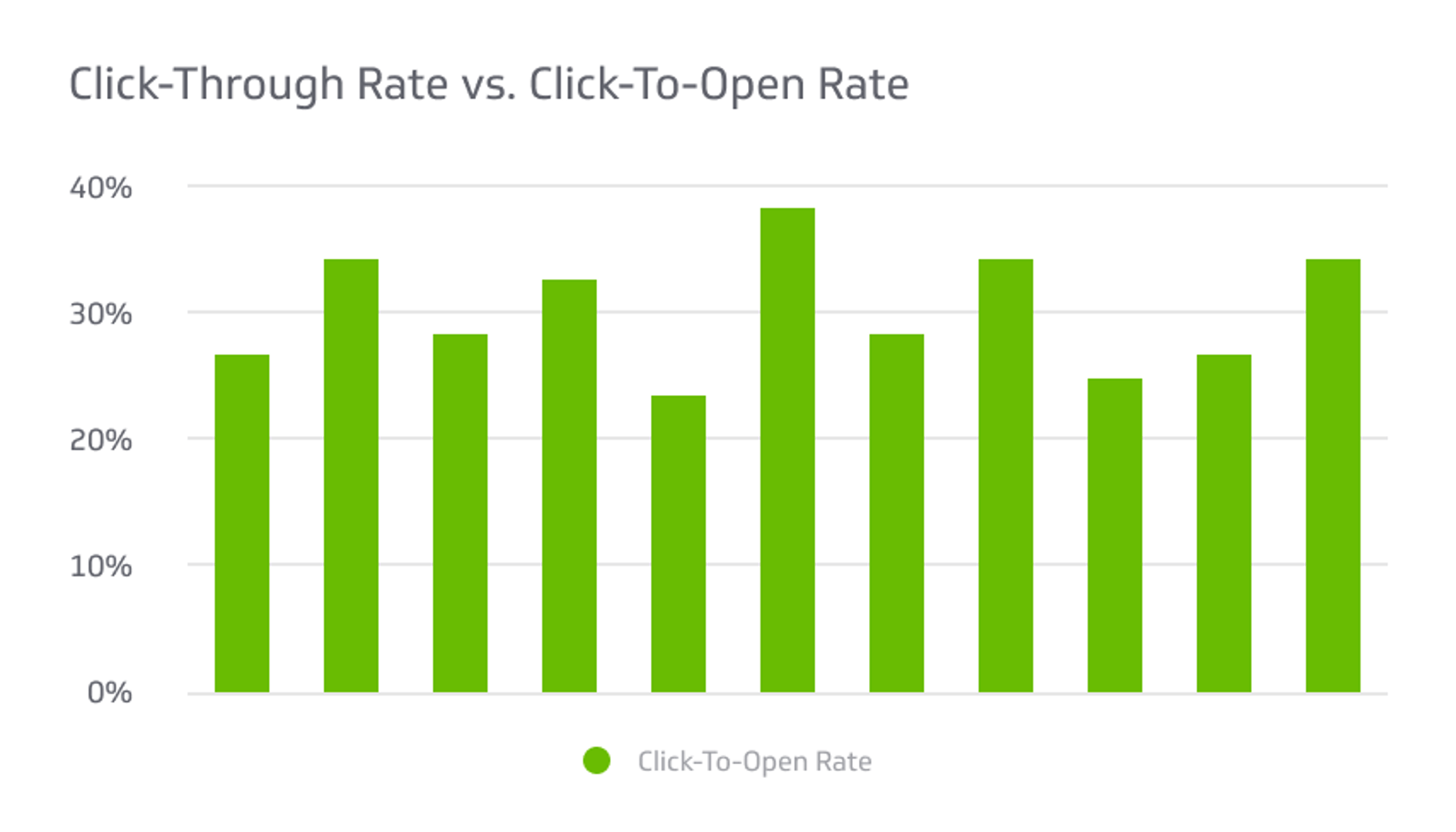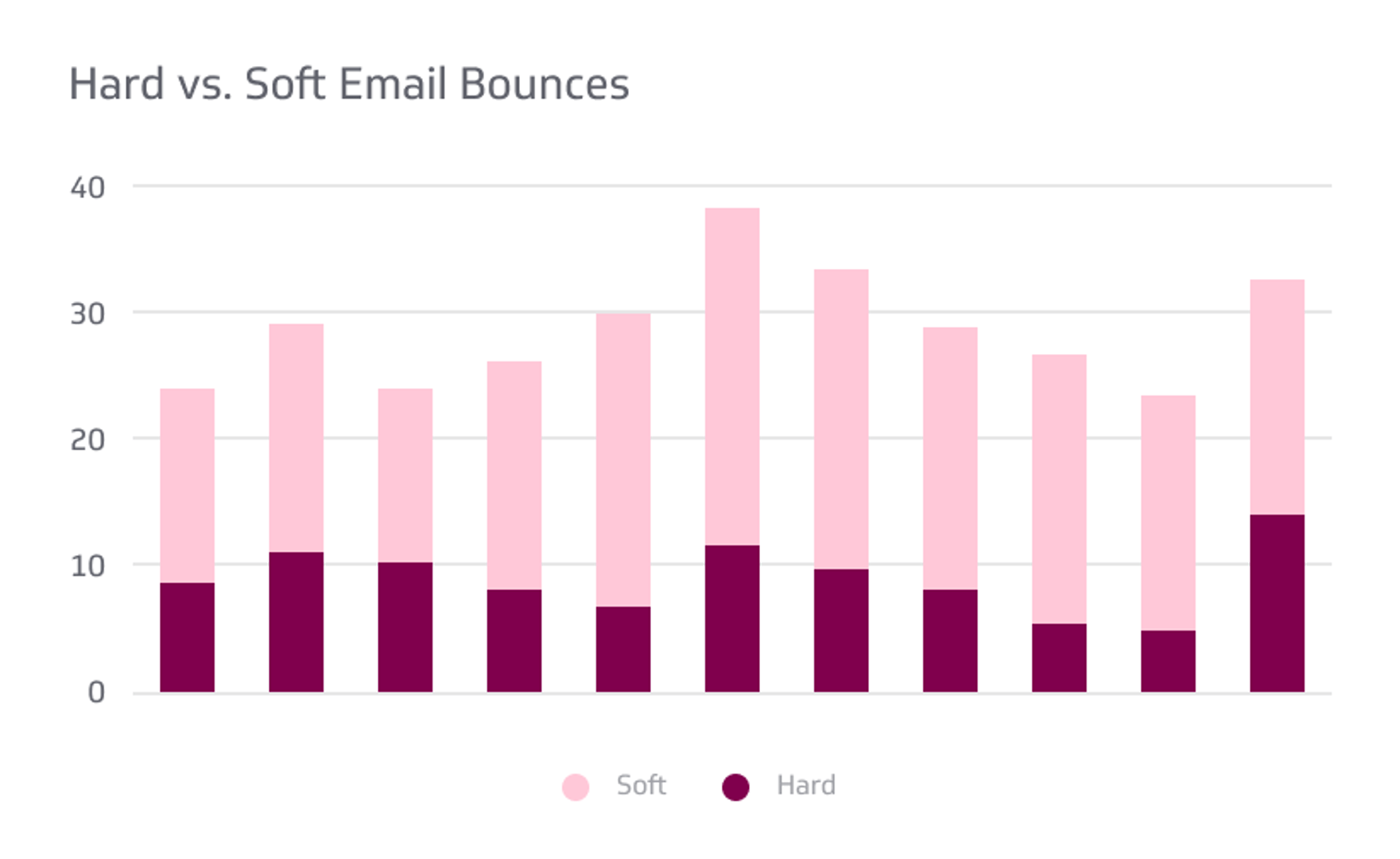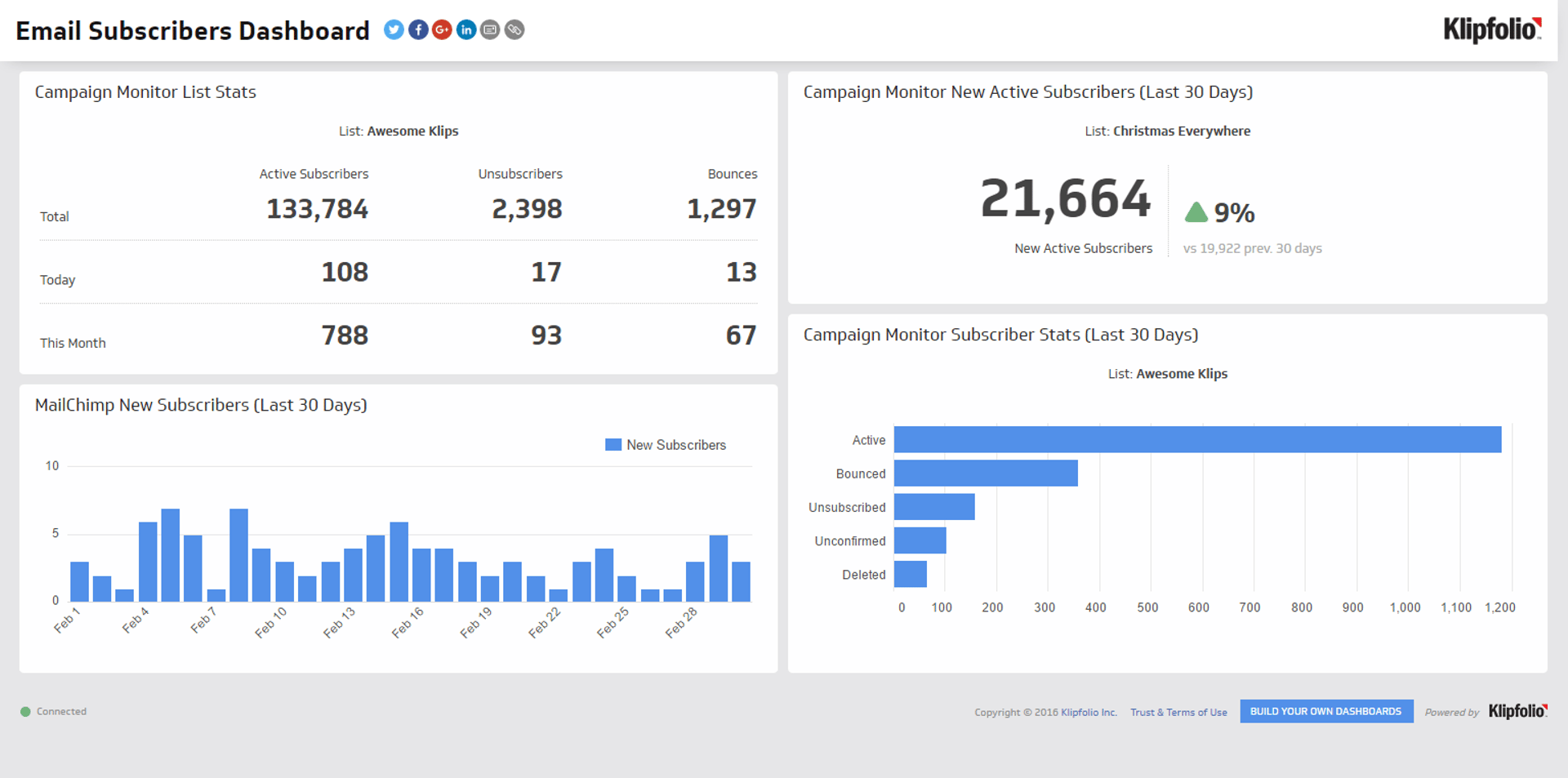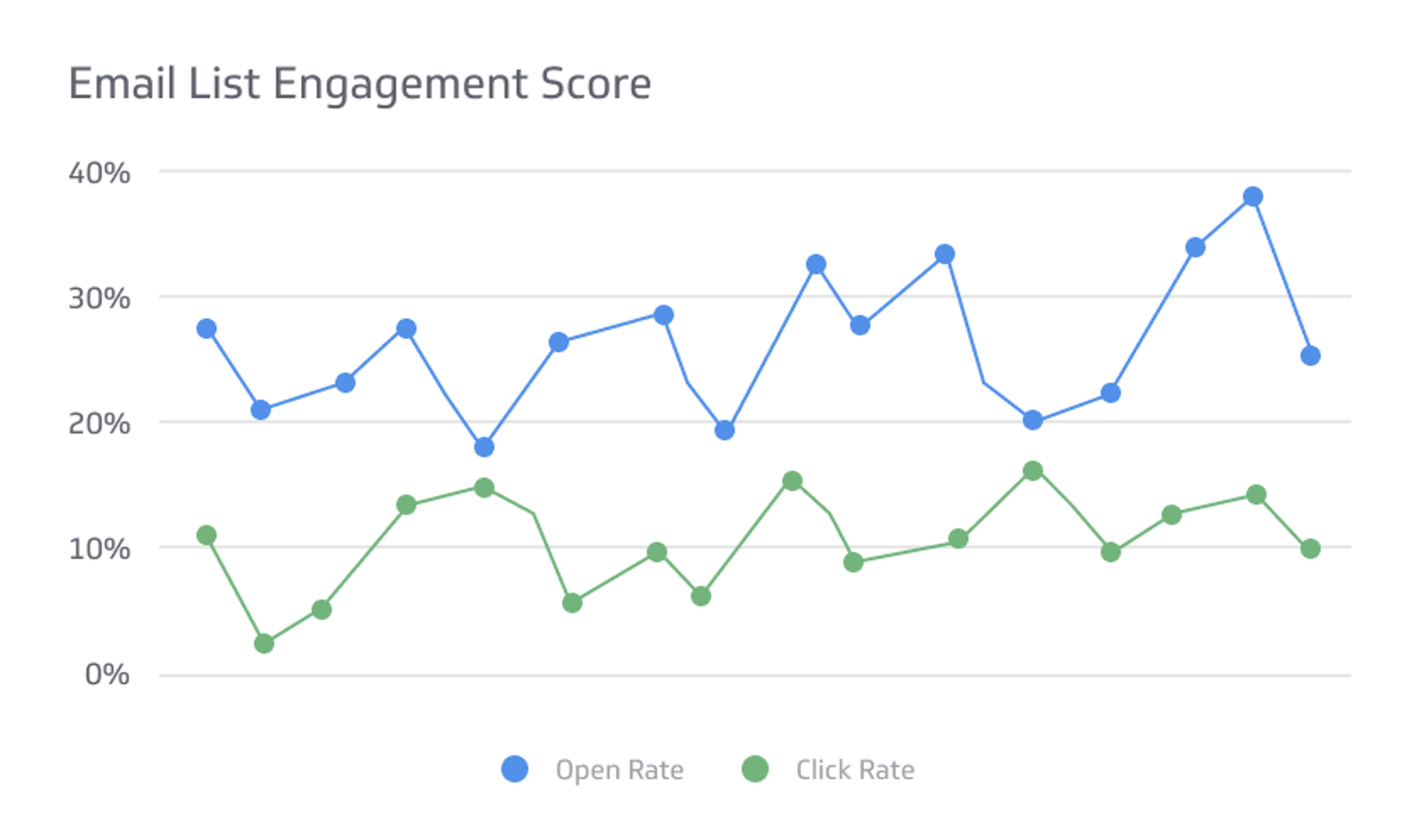Click-to-Open Rate (CTOR)
Click-to-Open rate (CTOR) represents the percentage of people who opened your emails and clicked the link within the email.
Track all your Email Marketing KPIs in one place
Sign up for free and start making decisions for your business with confidence.
.png)
Click-to-open rate is an essential metric in email marketing. If you want to learn about the meaning and usage of this metric, you’ve come to the right place. This article will define CTOR, help you calculate this metric for your business, and explain how you can further increase this metric. Keep reading for the answers to all your queries regarding CTOR.
What Is Click-to-Open Rate?
Click-to-Open rate (CTOR) represents the percentage of people who opened your emails and clicked the link within the email. Most email marketing campaigns embed links in the emails to draw traffic to a website page, often towards a product or service.
For instance, if you send an email to thirty people, twenty of them will open it, and ten will click the link within the email. Hence, concluding your click-to-open rate at 50 percent.
The higher your CTOR, the better, as a high CTOR means people are not only opening your marketing emails but reading them and then clicking on the desired link. A high CTOR indicates that your email marketing campaign is going well.
Why Is My Click-to-Open Rate Important?
The CTOR is a critical metric for assessing how your emails resonate and engage with the consumers.
By only focusing on the people who open the emails, this metric can help you understand how your emails are performing and if your marketing strategy is working. If the email’s content, tone, design, or message deters people from clicking the email link, your CTOR will help you identify and rectify this problem.
How to Find Your Click-to-Open Rate
If you use an email marketing service like Mailchimp or HubSpot, they will typically provide you with performance reports that outline your CTOR and several other crucial metrics. You can find your CTOR on these reports and monitor them monthly or weekly, depending on the report frequency.
If you’re operating a manual marketing campaign, you can use this formula to find your CTOR:
- CTOR = (clicks / opens) x 100
This formula will give you a CTOR percentage, giving you an idea of the email campaign’s effectiveness.
What Is a Good Click-to-Open Rate?
You have your CTOR; what now? Knowing what a decent CTOR rate looks like can help you set goals for yourself, ensure you are competing with others in the industry, and optimize your marketing style.
The CTOR you should strive for depends heavily on your industry, as the average range varies depending on your type of business. The sections below will explain average and good CTORs as well as some industry benchmarks.
Average Click-to-Open Rate
As of 2023, the average CTOR across all industries is 11%, meaning roughly one consumer clicks on the link inside the email out of every ten emails opened. However, remember that this number is average, so it’s not necessarily a good benchmark to set for yourself.
If you don’t know your industry benchmarks, it’s best to strive for a CTOR of 20%, as this is considered an excellent CTOR in most industries.
Industry Benchmarks for Click-to-Open Rate
Some industries have an average CTOR of 6%, while others average above 20%. Your industry strongly impacts your CTOR. Below are the average CTORs for the top industries as of January 2023:
- Arts and Entertainment: 12.46%
- Automotive: 13.35%
- Communications: 12.46%
- Education: 7.97%
- Financial Services: 21.45%
- Healthy and Beauty: 9.59%
- Healthcare: 7.58%
- Legal Services: 10.9%
- Non-Profits: 10.76%
- Publishing: 18.07%
- Real Estate: 7.16%
- Food and Beverage: 10.95%
- Retail: 8.71%
- Sports: 9.73%
- Technology: 12.45%
- Travel: 6.61%
As you can see, the CTORs range substantially from industry to industry. Some industries have lower click-to-open rates because they send more emails.
Travel and retail have some of the highest total email sent rates, and if someone opens four emails in one day from Forever 21, the customer is unlikely to click the link in all four.
On the other hand, the financial industry has a higher CTOR because people typically do not open those emails if they do not need financial services.
If your industry is not on this list, do some research to determine the average rate, and set a goal for yourself that is higher than the average.
How to Increase Your Click-to-Open Rate
A low CTOR likely means something needs to be fixed in your marketing campaign. You don't want a low CTOR, so if you're unhappy with your click-to-open rate, there are plenty of ways to improve it. Below are the best ways to increase your CTOR.
Monitor Your CTOR
The only way to improve your click-to-open rate is to pay attention to it! Depending on the email marketing service you use, you may receive frequent performance reports or be able to view your metrics in real-time whenever you want. Whichever option you have, take full advantage of it.
Check your CTOR rate as often as possible and compare it to your past CTOR. Create a baseline for your CTOR to determine your average CTOR for successfully setting goals. The sections below offer more advice on increasing your CTOR, but none of these tips will work if you don’t stay on top of your CTOR trends and monitor the results of your efforts.
Personalize Emails
Consumers are less likely to open an email and click on the link if it feels generic or irrelevant. When people feel emails are directly talking to them and offering something personalized, they are more inclined to open the email and click the link.
So you must incorporate more personalization into your email contents to tailor each email according to the customer it’s going to.
Do this using other data, such as products viewed, pages viewed, and products favorited. With this data, you can set up an email campaign that shows customers the products they’ve been interested in, increasing the odds of them opening the email and following the link.
Additionally, personalizing emails is not just about personalizing the link; it’s also about tailoring the message to the customer.
Optimize Subject Lines
You can only improve your CTOR if consumers are opening your emails. A high CTOR means little if you have a very low open rate, which will be discussed more in the sections below. The best way to improve your email opening rate is to optimize the subject lines to make them irresistible. Clever, funny, and enticing subject lines are the key to enhancing an open rate.
Shock value is a decent strategy for some industries, but be careful with these, as they can annoy and frustrate customers. While you should inject humor and wit into your subject line, it must still be relevant to the copy and message inside the email.
Therefore, if your subject lines are entirely off-topic, acting like sneaky clickbait, it may result in more customers unsubscribing, which is the opposite of what you want.
Use an Enticing CTA
Okay, so you personalized the emails, optimized the subject lines, and improved your open rate. But you still need that click. Opened emails are good, but link clicks are even better. To ensure your email openers click the link, you must start or end your email copy with an enticing and unique call to action (CTA).
What you want the customer to do, in this case, click a link, must be crystal clear. Don’t embed the link in a random sentence or leave it hanging in an empty space in the email with no context or instruction. Hold the customer’s hand all the way to the link and then encourage them to click it!
Assess Against Other Metrics
As mentioned, this isn't necessarily a good sign if your open rate is low but your CTOR is high. For example, if you send 100 emails, one person opens that email, and that same person clicks the link, your CTOR will be 100%, but your open rate will be 1%.
Both metrics must be in good shape for a successful marketing campaign. Make sure you look at the whole picture to improve your CTOR.
Related Metrics
Below are a few of the most important email marketing metrics to pay attention to along with your CTOR.
Total Sent: The total sent is simply the number of emails you sent out in your campaign, which is not the same as the number of emails received.
Open Rate: Open rate is the percentage of total emails sent that were opened by the receiver.
Click-Through Rate: The click-through rate is the percentage of people who clicked the email link out of the total emails sent. It’s easy to confuse this with CTOR, but remember that CTOR is the percentage of clicks out of opened emails, not emails sent.
Email Conversion Rate: This metric is the percentage of email recipients who completed the desired action that the link leads, whether it was purchasing a product, subscribing to a service, or downloading something.
Bounce Rate: The bounce rate is the percentage of emails that did not make it to the recipient’s inbox for various reasons.
Unsubscribe Rate: The email unsubscribe rate is the number or percentage of your subscribers who unsubscribed or opted out of your emails.
Bottom Line
Your click-to-open rate is essential, but it will only be beneficial if you keep an eye on the bigger picture of your marketing campaign. Paying attention to these metrics and understanding their importance will surely increase sales or subscriptions and help you successfully grow your business!
Related Metrics & KPIs



